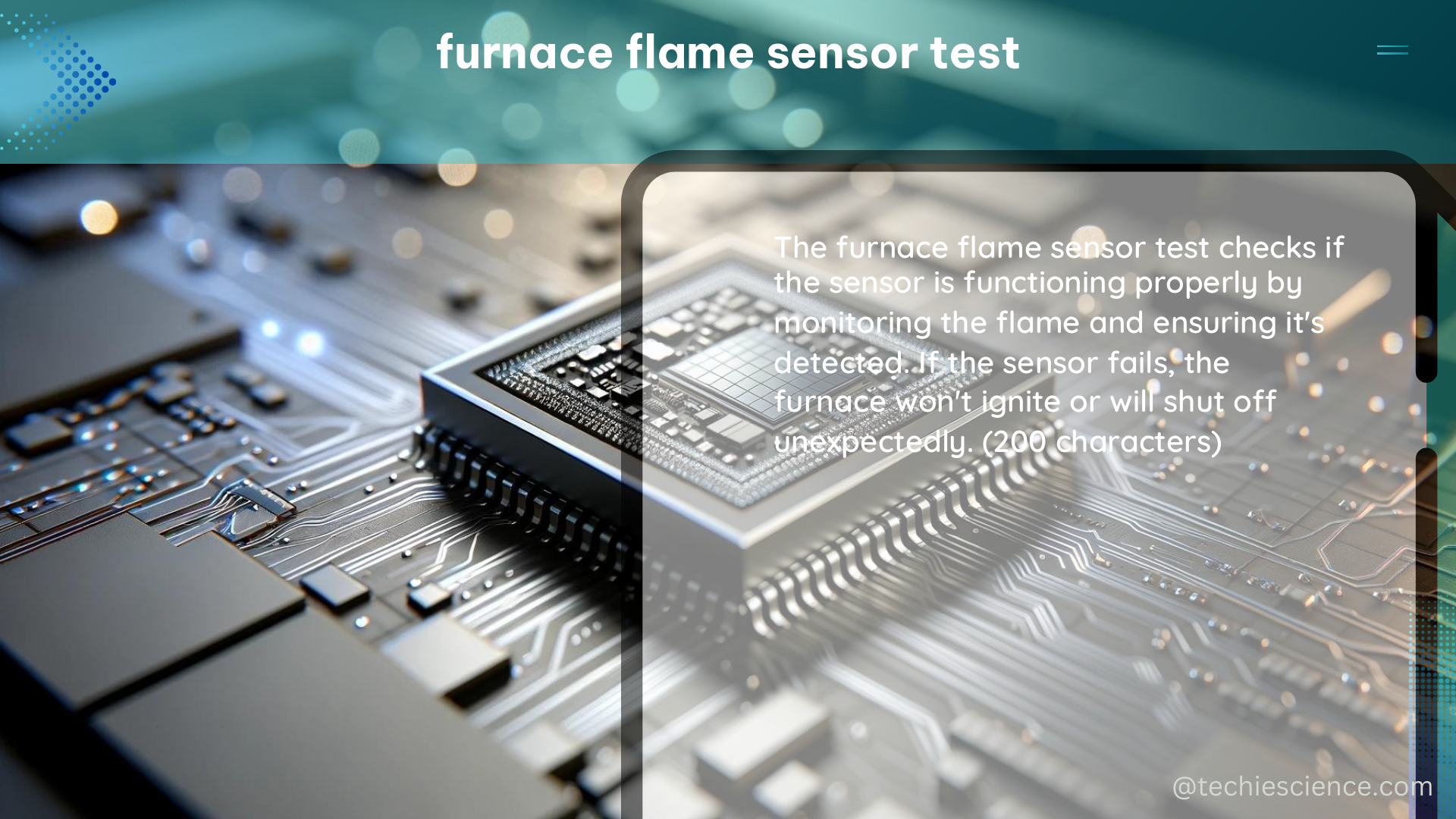The flame sensor in a furnace is a crucial safety component that ensures the gas valve remains open only when there is a flame. It works on the principle of flame rectification, where the flame creates a diode-like characteristic between the flame rod and the burner, which is grounded. This asymmetric conduction is used to distinguish between shorted, open, and resistive conduction, which could be caused by faults, condensation, or contamination.
Preparing for the Flame Sensor Test
Before testing the flame sensor, it’s essential to ensure that the furnace is properly grounded. This can be done by powering down the heater and taking an ohm reading between the neutral and the burner assembly. The reading should be a few ohms of resistance at most, with a lower ohm reading indicating better grounding.
Next, check the polarity of the electrical connections. Ensure that the incoming hot wire is connected to the hot terminal and the neutral wire is connected to the neutral terminal.
Positioning the Flame Sensor

The flame sensor rod must be positioned so that it will be fully covered by the flame when the furnace is running. This is crucial for the sensor to accurately detect the presence of the flame. Improper positioning can lead to false readings or the furnace shutting down prematurely.
Measuring the Flame Sensor Output
To measure the flame sensor output, you’ll need a multimeter that can read in the microamp (μA) scale with a resolution of at least 0.10 μA. Here’s how to perform the test:
- Disconnect the lead from the flame sensor rod.
- Connect one multimeter lead to the flame sensor rod and the other lead to the terminal on the control board where the flame sensor lead was connected.
- Turn on the furnace and observe the microamp reading when the flame is lit.
A properly functioning flame sensor should read between 0.5 and 10 microamps (μA), with common readings falling between 2 and 6 μA. This range indicates that the flame sensor is working correctly and can detect the presence of the flame.
Troubleshooting the Flame Sensor
If the microamp reading is not within the expected range, there are a few things you can check:
- Shorted Flame Sensor: If the reading is 0 μA, the flame sensor may be shorted to ground. This can be caused by a damaged or corroded sensor.
- Open Flame Sensor: If the reading is infinite (no current flow), the flame sensor may be open or disconnected.
- Contaminated Flame Sensor: If the reading is above 10 μA, the flame sensor may be contaminated with soot, dust, or other debris. This can be addressed by cleaning the sensor.
- Improper Flame Sensor Positioning: Ensure that the flame sensor rod is positioned correctly within the flame. If it’s not fully covered by the flame, the sensor may not be able to detect the flame properly.
- Weak or Unstable Flame: If the flame is not bright enough or is flickering, the flame sensor may not be able to detect it reliably. Check for any issues with the gas supply or burner assembly.
If the flame sensor is not working correctly, it should be replaced in accordance with the manufacturer’s recommendations and local codes.
Maintaining the Flame Sensor
To ensure the long-term reliability of the flame sensor, it’s recommended to clean it annually during routine furnace maintenance. This can help prevent the buildup of contaminants that can affect the sensor’s performance.
When cleaning the flame sensor, use a soft-bristle brush or a clean, lint-free cloth to gently remove any debris or deposits. Avoid using abrasive materials or chemicals, as these can damage the sensor.
Conclusion
Testing the flame sensor in a furnace is a crucial step in ensuring the safe and efficient operation of the heating system. By following the steps outlined in this guide, you can accurately measure the flame sensor’s output, identify any issues, and take the necessary steps to maintain or replace the sensor as needed.
Remember, safety should always be the top priority when working on any HVAC equipment. If you’re not comfortable performing this test or have any doubts about the process, it’s best to consult a professional HVAC technician.
References:
- Flame Sensing: The Basics
- Checking Micro Amps on Flame Sensor
- Flame Sensor Testing and Troubleshooting

The lambdageeks.com Core SME Team is a group of experienced subject matter experts from diverse scientific and technical fields including Physics, Chemistry, Technology,Electronics & Electrical Engineering, Automotive, Mechanical Engineering. Our team collaborates to create high-quality, well-researched articles on a wide range of science and technology topics for the lambdageeks.com website.
All Our Senior SME are having more than 7 Years of experience in the respective fields . They are either Working Industry Professionals or assocaited With different Universities. Refer Our Authors Page to get to know About our Core SMEs.